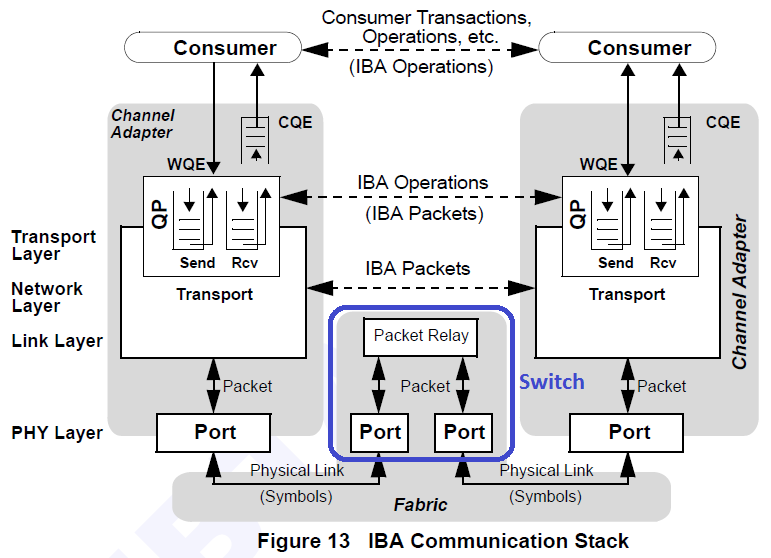Technical Information
It is also said that InfiniBand has end-to-end flow control.
Intra-fabric traffic flow is controlled via a daemon called the Subnet Manager (often just called a "SM"). A well known open source implementation (opensm) currently supports 9 different routing algorithms (Min Hop, UPDN, DNUP, Fat Tree, Torus-2QoS, etc). Many pages could be written about these algorithms and their different approaches to flow control.
Does it mean that there is no (need) for any other (in-between) flow control? Why?
Inter-fabric traffic flow typically requires a protocol that can route too and from InfiniBand networks and other network types. LNet is an example of a protocol that can do that.
General Information
Can anybody explain what is InfiniBand?
This question is very broad, so I will attempt to add some more general information as a complement to the existing answers.
Future Roadmap
There are currently multiple generations of Infiniband (QDR, FDR, EDR), with HDR hopefully coming out at some point in 2018 or 2019. Yes, this may become dated quickly, so refer to the roadmap for current information. Upcoming generations are called NDR and XDR, but don't even have tentative dates on the current roadmap.
Key Organizations
Important organizations include Infiniband Trade Association (IBTA) and Open Fabrics Alliance (OFA). Refer to their websites for plenty of good Infiniband information.

